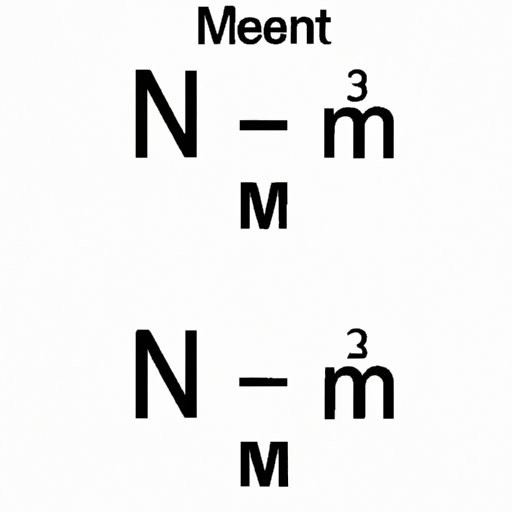
I. Introduction
Have you ever wondered how to find the average of a set of numbers? In mathematics, this process is called finding the mean. Whether you’re a student trying to calculate your GPA or a business owner trying to analyze your sales data, understanding the concept of mean is essential. This article aims to be a guide on how to find the mean and the different types of means that exist. Keep reading to learn more!
II. Step-by-Step Guide
The mean, also known as the arithmetic mean, is the average of a set of numbers. To find the mean, follow these simple steps:
- Add up all the numbers in the set.
- Count how many numbers are in the set. This is your total number of values.
- Divide the sum by the total number of values.
For example, if we want to find the mean of the set 2, 4, 5, 8:
- 2 + 4 + 5 + 8 = 19
- There are four values in the set.
- 19 / 4 = 4.75
Therefore, the mean of the set is 4.75.
III. Real-Life Applications
Knowing how to find the mean can be useful in various fields, such as sports, finance, and science. In sports, the mean is often used to calculate the average score or time of a team or player. In finance, the mean can be used to analyze stock prices or investment returns. In science, the mean can be used to calculate the average temperature or rainfall for a particular location.
IV. Different Types of Means
While the arithmetic mean is the most commonly used mean, there are other types of means as well. These include:
Arithmetic Mean
The arithmetic mean is the sum of all values in a set divided by the total number of values. This is the type of mean we’ve discussed so far in this article.
Geometric Mean
The geometric mean is the nth root of the product of all values in a set, where n is the number of values.
For example, if we want to find the geometric mean of the set 2, 3, 4:
- 2 x 3 x 4 = 24
- The set has three values, so we take the cube root of 24, which is approximately 2.89.
Therefore, the geometric mean of the set is 2.89.
Harmonic Mean
The harmonic mean is the reciprocal of the arithmetic mean of the reciprocals of all values in a set.
For example, if we want to find the harmonic mean of the set 2, 5, 10:
- Reciprocals of the values: 1/2, 1/5, 1/10.
- Arithmetic mean of the reciprocals: (1/2 + 1/5 + 1/10) / 3 = 0.3667.
- Reciprocal of the arithmetic mean of the reciprocals: 1 / 0.3667 = 2.7273.
Therefore, the harmonic mean of the set is 2.7273.
V. Mean vs Median
While the mean is the arithmetic average of a set of numbers, the median is the middle value in a set of numbers. The median is calculated by arranging the numbers in order from least to greatest and finding the value that falls in the middle. The median is often used instead of the mean when there are extreme values (outliers) that could skew the calculation of the mean.
For example, in the set 2, 4, 5, 8, the mean is 4.75 and the median is 4.5. In this case, the values in the set are relatively close together, so both the mean and median are viable measures of the central tendency.
However, consider the set 2, 4, 5, 1000. The mean of this set is 252.75, which is significantly higher than the other values in the set. In this case, the median, which is 4.5, would be a better representation of the central tendency of the group.
VI. Common Mistakes to Avoid
When finding the mean, there are a few common mistakes to avoid:
- Forgetting to add up all the numbers in the set.
- Dividing by the wrong number of values.
- Rounding too early in the calculation.
To avoid these mistakes, be sure to double-check your calculations and only round at the end of the calculation.
VII. Interactive Tools
Interactive calculators and tools can be a great way to practice finding the mean and get a hands-on approach to learning. Here are a few online tools you can try out:
VIII. Conclusion
In conclusion, finding the mean is a simple process that involves adding up all the values in a set and dividing by the total number of values. However, there are different types of means, such as the geometric and harmonic mean, that can be used in various contexts. It’s also essential to understand the difference between the mean and median and when to use each. By avoiding common mistakes in the calculation and utilizing interactive tools, you can become more confident in your math skills. Knowing how to find the mean will be useful in various fields and can help you make more informed decisions.




